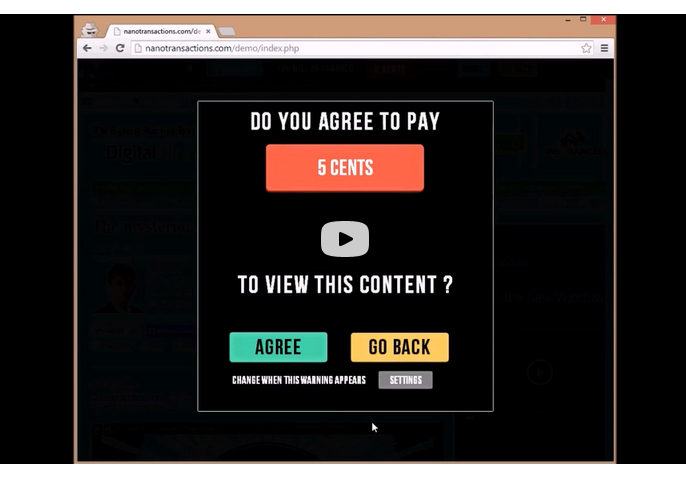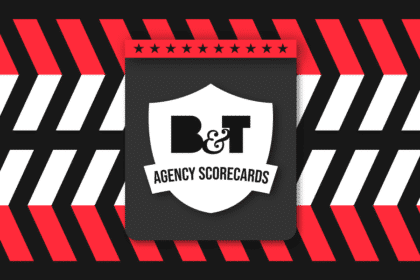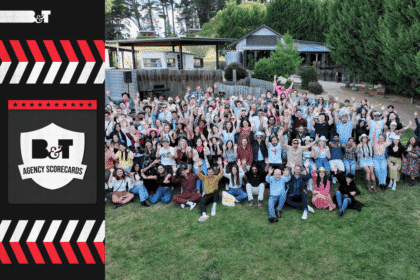Publishers worldwide are being given a revenue life line with the announcement by Australian company Nanotransactions that it is developing an innovative content payment system.
The system, which is seeking funding to move into its final development phase, removes the hurdles that publishers face in getting internet users to pay for content. Nanotransactions will allow people to pay just a few cents to access the content they want on a pay-per-view basis, without requiring them to subscribe or log in to paywalls.
It is envisaged that Nanotransactions will initially be used by online news site publishers, bloggers and freelance writers, but will rapidly broaden its reach to video and audio streaming sites and musicians.
Investors are currently being sought to underwrite the final stages of development, with a crowd funding program about to commence on Indiegogo at http://www.igg.me/at/nanotransactions.
Nanotransactions Founder Nick Ross, who is himself a publisher, editor and journalist, commented “Netflix’ experience in the US has shown us that if content is offered at a reasonable price, using a system that’s simple to use, people will pay. We believe Nanotransactions will deliver a robust and profitable transactional model for publishers of all sizes.
“Current newspaper pay-wall business models are based on the expectation that less than two per cent of regular online readers will subscribe, but that’s not a sustainable business model for the long term. Paywalls are also annoying for consumers to use particularly when every publisher has a different system. Unless we as an industry take a significantly different approach, our industry will die on its feet,” said Ross.
Nanotransactions is currently being developed by Vivant, the company which created CommBank’s Kaching banking app and its Property Guide app.
Existing micro payment systems cost around 40 cents per transaction in credit card and PayPal fees, which means publishers struggle to find a price point that customers are willing to accept to access content. By contrast, Nanotransactions will charge as little as one cent per transaction, giving publishers the flexibility to set different rates for their content. It is anticipated that the majority of content would be charged from as little as five cents per article, up to 10 or even 20 cents for special or unique content. Payments can also be capped per day or per week or per item of media.
For a major publisher who may see a basic news story achieving a fairly-typical 20,000 views, Nanotransactions offers them the opportunity to potentially generate $1,000 at five cents per view. A micropublisher, or high-profile writer with a dedicated audience or social media following who, would be happy to pay for specialist content, may opt to charge 10c or even 20c per one off article and could potentially generate well over $1,000 a story.
“The current industry standard for freelance writing is just $200per article at best and many freelancers are expected to write for free,” said Ross.
These higher rates of return would enable publishers to enjoy greater profitability and in turn pay for more high-quality staff and freelancers, thus improving the general content quality and offering work to the many now-unemployed journalists.
As well as offering publishers a strong income stream and readers the opportunity to access higher quality content, Nanotransactions will also allow people to:
- Republish other people’s content and have all parties get paid;
- Publishers can commission specialist/high-profile writers to create original content for them without spending money from their freelance budgets – the Nanotransactions payments automatically get split between the publisher and the writer’s accounts.
Potential impact on existing websites and industries
While Nanotransactions is initially targeting publishers, it has considerable potential in a range of other markets including:
- Musicians can charge ‘per play’ of their music while fans can republish songs on their own websites and ALL parties get paid.
- Video and audio streaming websites can charge by the minute – no having to worry about rental expiries or paying to ‘watch the whole thing again’ when you just want to re-watch one part.
- Pay a couple of cents to skip ads
- Blogging communities and Contributed Content websites (and everyone else) can use the same account to pay for content that they do to receive money for content. The person who contributes most gets the most money. Republishing other people’s work gains more even money. Going viral offers potentially-large rewards.
- Internet forums can charge a few cents per day to help cover running costs.
- Marketing companies can finally charge for sponsored content.









